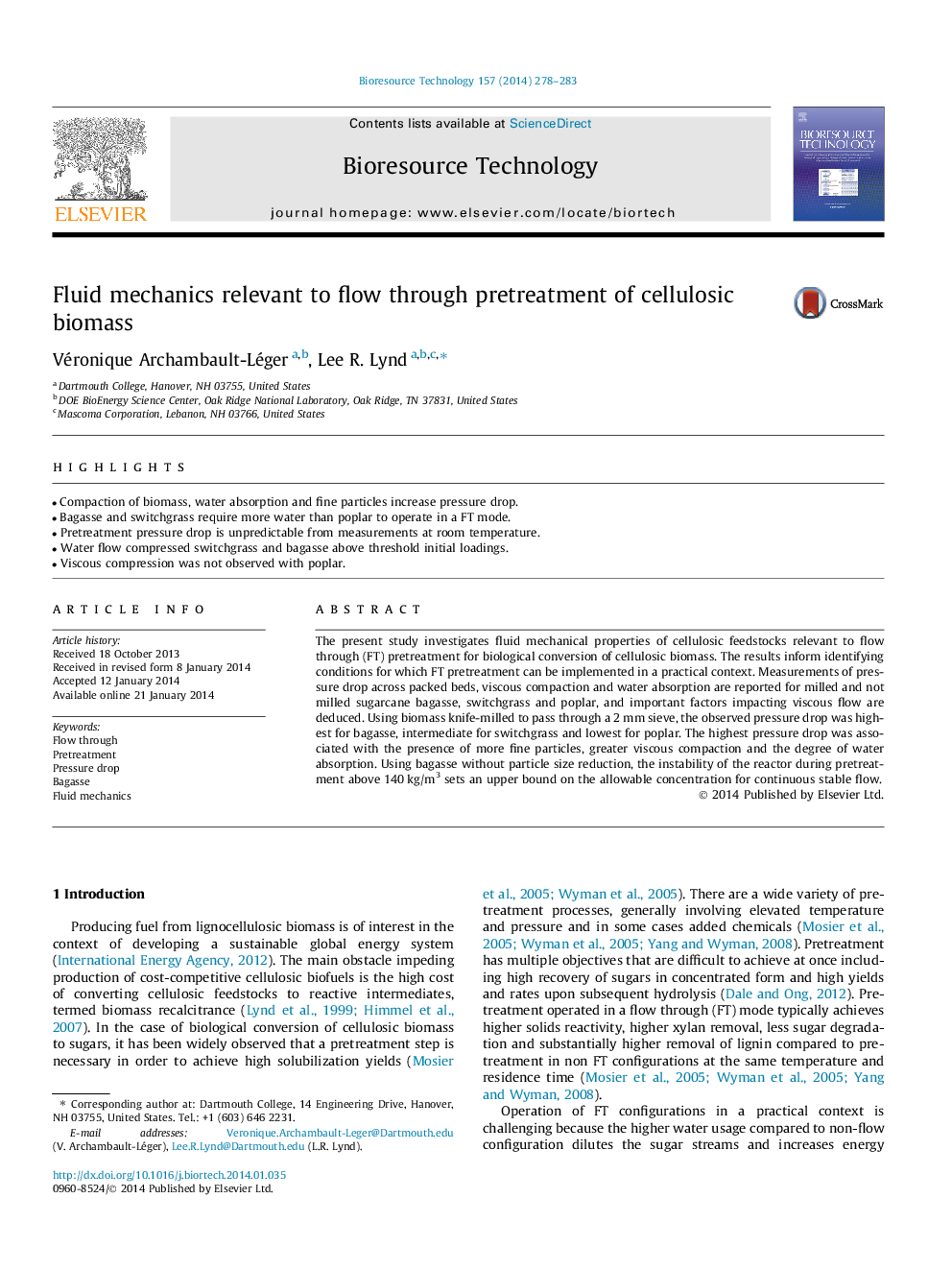| Article ID | Journal | Published Year | Pages | File Type |
|---|---|---|---|---|
| 680944 | Bioresource Technology | 2014 | 6 Pages |
•Compaction of biomass, water absorption and fine particles increase pressure drop.•Bagasse and switchgrass require more water than poplar to operate in a FT mode.•Pretreatment pressure drop is unpredictable from measurements at room temperature.•Water flow compressed switchgrass and bagasse above threshold initial loadings.•Viscous compression was not observed with poplar.
The present study investigates fluid mechanical properties of cellulosic feedstocks relevant to flow through (FT) pretreatment for biological conversion of cellulosic biomass. The results inform identifying conditions for which FT pretreatment can be implemented in a practical context. Measurements of pressure drop across packed beds, viscous compaction and water absorption are reported for milled and not milled sugarcane bagasse, switchgrass and poplar, and important factors impacting viscous flow are deduced. Using biomass knife-milled to pass through a 2 mm sieve, the observed pressure drop was highest for bagasse, intermediate for switchgrass and lowest for poplar. The highest pressure drop was associated with the presence of more fine particles, greater viscous compaction and the degree of water absorption. Using bagasse without particle size reduction, the instability of the reactor during pretreatment above 140 kg/m3 sets an upper bound on the allowable concentration for continuous stable flow.
